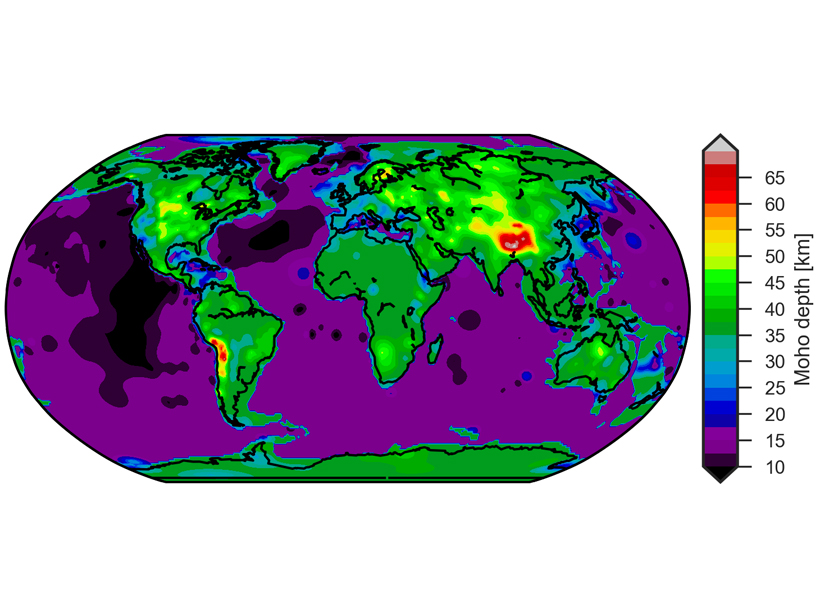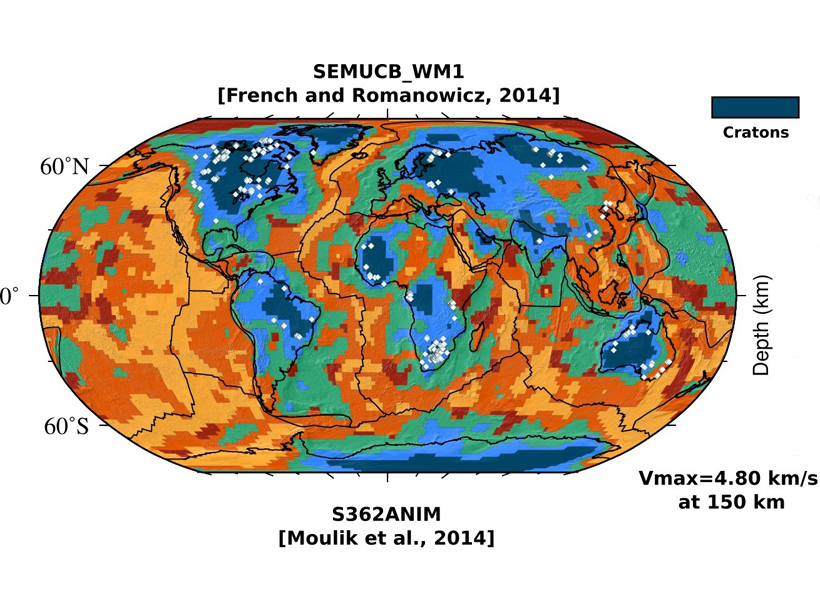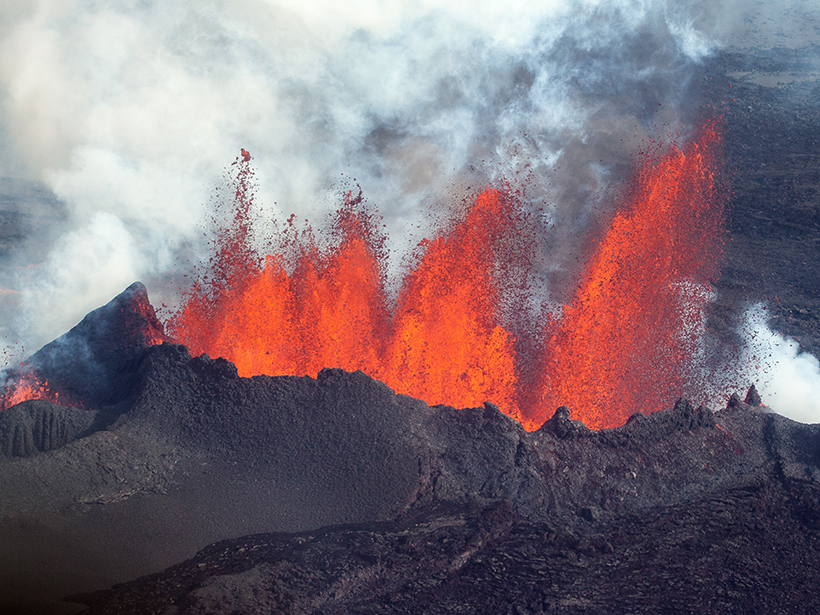Natural and manmade explosive events occurring on or below the Earth’s surface can be measured remotely in different ways and different places from the ionosphere.
Earth’s crust
Did Global Glaciation Cause the Great Unconformity?
In a new study, researchers make the case that large-scale glaciation during parts of the Neoproterozoic era led to extensive erosion of Earth’s crust.
Project VoiLA: Volatile Recycling in the Lesser Antilles
Deep water cycle studies have largely focused on subduction of lithosphere formed at fast spreading ridges. However, oceanic plates are more likely to become hydrated as spreading rate decreases.
New Global Crustal Model Built as Foundation for Future Studies
A new global crustal model and its corresponding uncertainty were obtained using minimum a priori information and a geostatistical approach.
Philip England Receives 2018 Walter H. Bucher Medal
Philip England was awarded the 2018 Walter H. Bucher Medal at the AGU Fall Meeting Honors Ceremony, held on 12 December 2018 in Washington, D. C. The medal is for “original contributions to the basic knowledge of the crust and lithosphere.”
Understanding Electrical Signals from Below Earth’s Surface
A new version of a free Web application (SIGMELTS 2.0) helps Earth scientists interpret electrical anomalies in Earth’s crust and mantle and track the sources of earthquakes and volcanic eruptions.
A More Detailed Look at Earth’s Most Poorly Understood Crust
The second-generation Antarctic Digital Magnetic Anomaly Project offers a powerful new tool for probing the structure and evolution of the southernmost continent’s lithosphere.
Carbonate Melting Enhances Mantle CO2 Fluxes in Old Ocean Basins
The amount of CO2 segregated from the mantle by carbonate melting beneath old oceanic crust may equal that emitted along the mid-ocean ridge system, thereby contributing to the global carbon cycle.
Are Diamonds Ubiquitous Beneath Old Stable Continents?
Although rare at the Earth’s surface, diamonds may be commonplace at depths of 120 to 150 kilometers below the surface within the lithosphere of old continents.
Magma Flow in a Major Icelandic Eruption
Mechanical modeling suggests that previous, undetected eruptions released tectonic stress near the ice-covered Bárðarbunga volcano.









